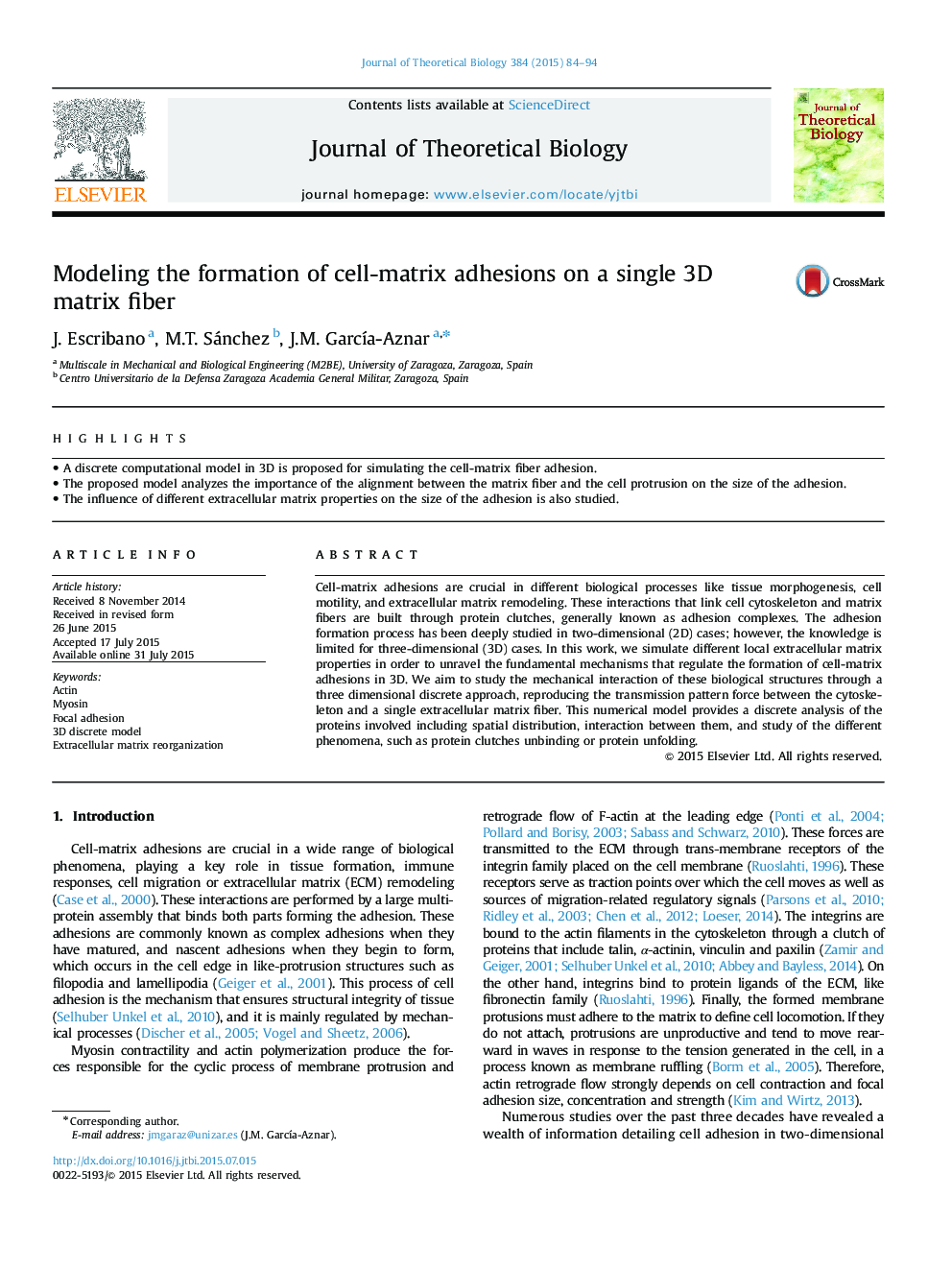| کد مقاله | کد نشریه | سال انتشار | مقاله انگلیسی | نسخه تمام متن |
|---|---|---|---|---|
| 4495982 | 1623826 | 2015 | 11 صفحه PDF | دانلود رایگان |
• A discrete computational model in 3D is proposed for simulating the cell-matrix fiber adhesion.
• The proposed model analyzes the importance of the alignment between the matrix fiber and the cell protrusion on the size of the adhesion.
• The influence of different extracellular matrix properties on the size of the adhesion is also studied.
Cell-matrix adhesions are crucial in different biological processes like tissue morphogenesis, cell motility, and extracellular matrix remodeling. These interactions that link cell cytoskeleton and matrix fibers are built through protein clutches, generally known as adhesion complexes. The adhesion formation process has been deeply studied in two-dimensional (2D) cases; however, the knowledge is limited for three-dimensional (3D) cases. In this work, we simulate different local extracellular matrix properties in order to unravel the fundamental mechanisms that regulate the formation of cell-matrix adhesions in 3D. We aim to study the mechanical interaction of these biological structures through a three dimensional discrete approach, reproducing the transmission pattern force between the cytoskeleton and a single extracellular matrix fiber. This numerical model provides a discrete analysis of the proteins involved including spatial distribution, interaction between them, and study of the different phenomena, such as protein clutches unbinding or protein unfolding.
Journal: Journal of Theoretical Biology - Volume 384, 7 November 2015, Pages 84–94
